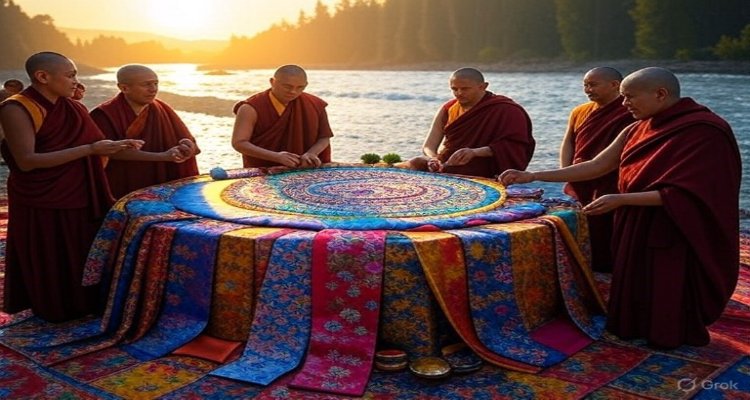The Spiritual Ceremonies That Take an Entire Year to Complete
Some spiritual traditions demand patience beyond measure—explore the year-long ceremonies where faith, time, and community converge.
Introduction: A Year in Devotion
In an age of instant gratification, there are still traditions that move to a rhythm older than clocks and calendars. Across continents and cultures, certain spiritual ceremonies are designed to span an entire year—meticulously unfolding through seasonal rituals, symbolic offerings, and communal gatherings. These ceremonies are more than religious events; they are living tapestries of belief, patience, and human connection, each step measured not in minutes, but in months.
Context & Background: The World’s Longest Sacred Rites
Year-long spiritual ceremonies can be found in diverse faith systems—from the high mountains of the Himalayas to the riverbanks of the Amazon.
- In Tibetan Buddhism, a “Kalachakra Mandala” initiation may take months to prepare, but the associated prayer cycles can extend over a full year.
- Among certain Native American tribes, “seasonal rounds” of ceremonies—tied to planting, harvest, and celestial events—are interconnected, forming a single sacred cycle.
- In West Africa, the Yoruba Ifá tradition sometimes conducts “annual divination journeys” that start with a New Year ritual and conclude the following year with a final offering.
Historically, the length of these ceremonies is not arbitrary—it reflects the agricultural calendar, astronomical alignments, or deeply held beliefs about transformation and spiritual readiness.
Main Developments: A Calendar of Sacred Steps
While every tradition varies, the defining trait of these ceremonies is their structured timeline. The year is broken into phases, each with its own symbolic meaning:
- Initiation Phase (Months 1–2)
The ceremony begins with purification rites—fasting, prayer, and cleansing spaces. This sets the spiritual tone for the journey ahead. - Middle Rites (Months 3–9)
During this period, participants engage in seasonal rituals, pilgrimages, or symbolic tasks. In some traditions, these might involve planting and tending sacred crops, creating elaborate sacred art, or holding repeated community gatherings. - Culmination Phase (Months 10–12)
The closing months often involve the most intense spiritual work—fasts, night vigils, and final offerings. The last gathering may coincide with a solstice, equinox, or culturally significant festival.
These year-long structures serve as both spiritual discipline and community glue—bringing together generations in shared purpose.
Expert Insight: Why a Year Matters
According to Dr. Meena Kaul, a cultural anthropologist specializing in ritual studies:
“A year-long ceremony mirrors the human life cycle—it has birth, growth, challenges, and culmination. It also reflects nature’s own timeline. This duration ensures participants are not just witnesses, but transformed beings by the end.”
Religious leaders agree. A Brazilian shaman once told researchers that the year-long ceremonial cycle was essential because “the forest does not teach in a day—it teaches with the patience of rain and sun.”
Impact & Implications: Beyond the Ritual
These ceremonies are not only spiritual; they are social and ecological anchors.
- Socially, they strengthen bonds across generations, as elders pass knowledge to the young through participation.
- Economically, they support local artisans, musicians, and farmers who provide ceremonial goods over the year.
- Environmentally, they often promote sustainable practices, as many rites are tied to seasonal planting and respectful harvesting.
In a globalized, fast-paced world, these ceremonies stand as counterweights—reminders that depth, meaning, and transformation often require the long arc of time.
Conclusion: The Gift of a Year
To dedicate a year to a spiritual ceremony is to step outside the rush of modern life and into a slower, deeper current. The journey demands patience, but rewards it with wisdom, connection, and a sense of belonging to something greater than oneself. In these year-long rites, time itself becomes sacred—and the end is as much a beginning as it is a conclusion.
Disclaimer: This article is for informational and cultural exploration purposes only. Practices described vary widely and should be experienced respectfully, with guidance from recognized practitioners within each tradition.











